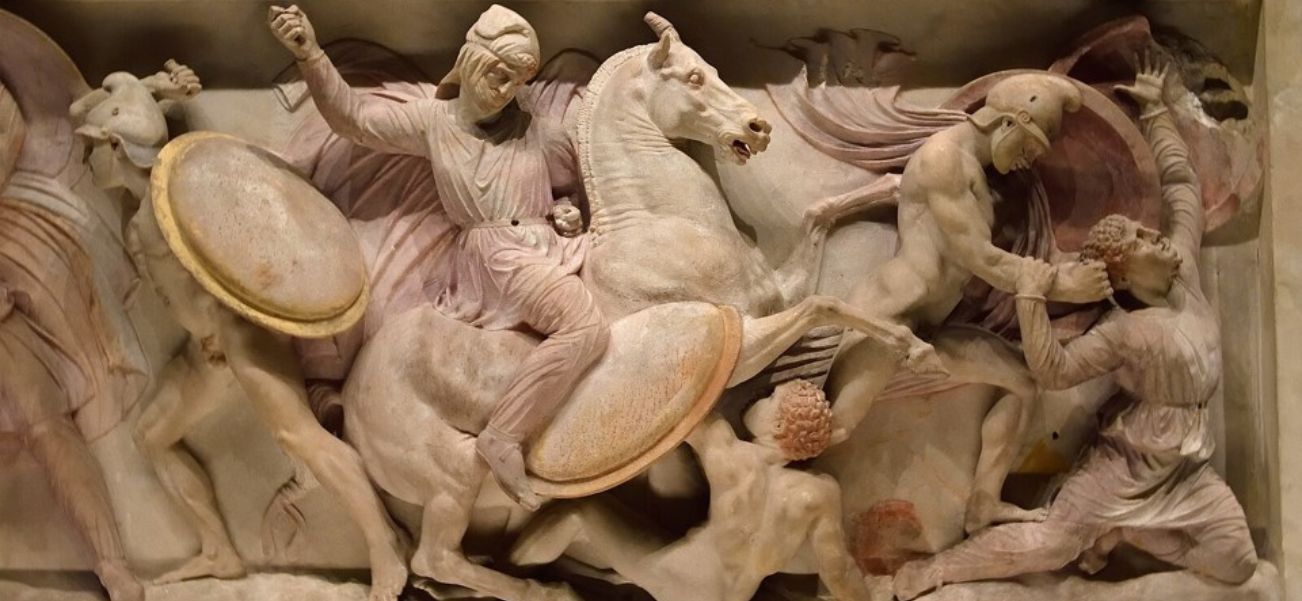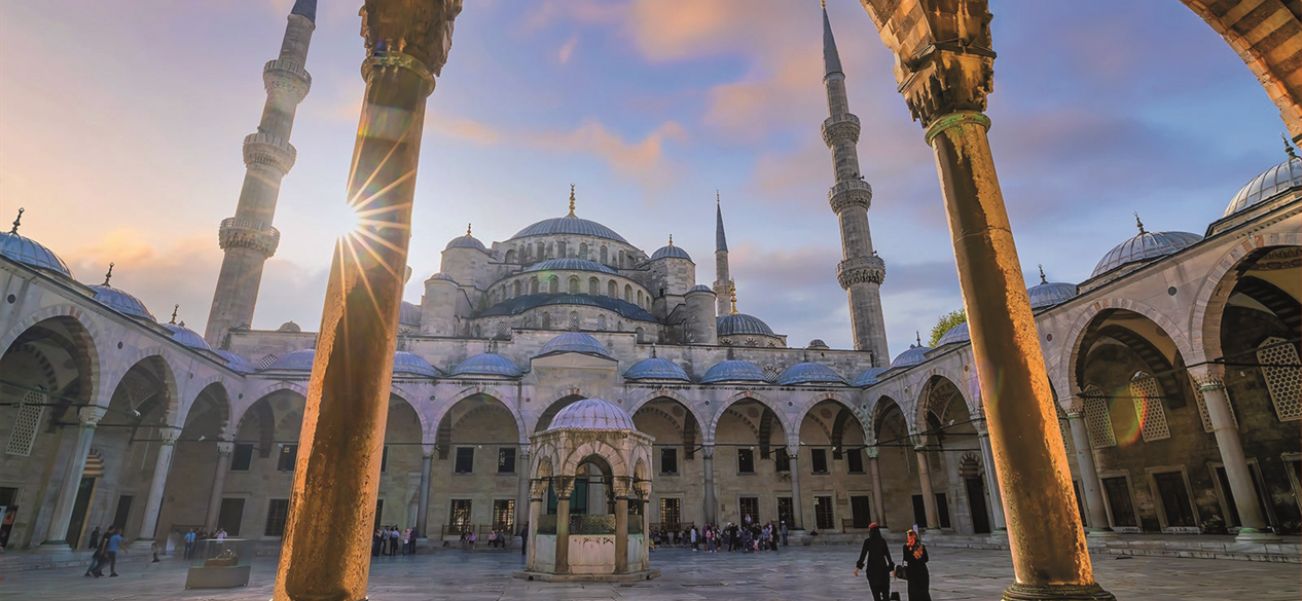
Uncovering Troy: Trojan War, Myth, Reality, or Something In Between
For over three millennia, the story of Troy has captivated the human imagination. It is a tale of a golden apple, a face that launched a thousand ships, a cunning wooden horse, and a decade-long siege that pitted the greatest heroes of Greece against the stalwart defenders of a mighty city. For centuries, the Trojan War lived squarely in the realm of Greek mythology—a foundational epic, immortalized by Homer in the "Iliad" and the "Odyssey", but considered by many to be pure fiction.
Yet, a single, stubborn question persisted: was Troy a real place? Did the city of Priam, Hector, and Paris actually exist, and was it destroyed in a cataclysmic war? The journey to answer this question is a detective story spanning centuries, one that blurs the lines between legend and history, and forces us to ask: is Troy a "myth", a "reality", or something profoundly and fascinatingly in between?
This blog post will delve into the layers of Troy, from the poetic verses of Homer to the archaeological trowels that scraped away the dust of ages, uncovering a truth far more complex and compelling than any simple binary.
Uncovering Trojan War: Legend, History, and the Truth Behind the Walls of Troy
Listen to the podcast about Troy's real story:
The Troy Museum: A Modern Gateway to an Ancient Legend
Part 1: The Immortal Myth - The Epic Cycle and the Power of Story

Before we can dig into the earth, we must first understand the story that inspired the search. The tale of the Trojan War comes to us primarily from the Epic Cycle, a collection of poems that told the entire story, from the beginning of the conflict to the homecomings of the heroes. While most are lost, two monumental works survive: Homer’s "Iliad" and "Odyssey".
The Story of the Trojan War

The seeds of the war were sown at the wedding of Peleus and Thetis, where the goddess of discord, Eris, tossed a golden apple inscribed "to the fairest." The ensuing vanity contest between Hera, Athena, and Aphrodite was judged by the Trojan prince, Paris. Seduced by Aphrodite’s promise of the most beautiful woman in the world, Helen, Paris awarded her the apple. The problem was that Helen was already married to Menelaus, the king of Sparta.
Paris’s abduction of Helen (or, in some versions, her willing elopement) was a grave insult that triggered a pan-Hellenic response. Menelaus and his brother, Agamemnon, the powerful king of Mycenae, gathered a vast alliance of Greek heroes, including the cunning Odysseus, the mighty Achilles, and the aged Nestor. Their fleet, "a thousand ships," set sail for the coast of Anatolia (modern-day Turkey) to lay siege to the city of Troy, also known as Ilium.

The "Iliad" does not cover the entire war, but focuses on a few critical weeks in the ninth year, centered on the rage of Achilles. It is a story of god-like heroes, divine intervention, and the brutal, personal cost of war. The epic concludes with the death of Hector, Troy's greatest defender, at the hands of Achilles.
The war’s end, famously not in the "Iliad", is the stuff of legend. After a decade of stalemate, the Greeks devised a cunning stratagem: the Trojan Horse. They built a massive, hollow wooden horse, left it on the beach as an ostensible offering to Athena, and pretended to sail away. The Trojans, believing the horse was a symbol of their victory, dragged it inside their impregnable walls. That night, Greek warriors hidden within the horse emerged, opened the city gates for their returning comrades, and Troy was put to the torch. The king, Priam, was slain, and the women, including Hecuba and Cassandra, were taken as slaves. The city was utterly destroyed.

This narrative was the bedrock of Classical Greek culture. It was their national epic, a source of moral lessons, and a template for heroism. For the ancient Greeks, the Trojan War was a real, historical event from their Bronze Age past. But as centuries turned into millennia, and the Mycenaean civilization that spawned the story faded into oblivion, the war increasingly took on the aura of pure mythology.
Part 2: The Quest for a Legendary City - Schliemann and the Birth of Trojan Archaeology
The man who single-handedly transformed the Trojan War from myth into a subject of scientific inquiry was a German businessman and amateur archaeologist named Heinrich Schliemann. A charismatic and controversial figure, Schliemann was obsessed with proving the historical truth of Homer’s epics.
Hisarlik: The Mound of Possibilities

Guided by geographical clues in the "Iliad" and the work of British diplomat Frank Calvert, who owned part of the site, Schliemann focused his efforts on a large mound in northwestern Turkey called Hisarlik. This was not a random choice. The location matched ancient descriptions: it was near the coast (though siltation has since pushed the shoreline back), within view of the islands of Imbros and Samothrace, and positioned to control the trade routes through the Dardanelles. This was a strategically vital location, exactly where a powerful Bronze Age city would be expected.
The "Treasure of Priam" and the "Mask of Agamemnon"
Beginning excavations in 1871, Schliemann dug with a fervor that was destructive by modern standards. He sought not subtle stratigraphy but proof of Homeric grandeur. In 1873, he claimed to have found it: a hoard of gold jewelry, diadems, and vessels he dramatically dubbed "Priam's Treasure." He famously photographed his young Greek wife, Sophia, wearing the "Jewels of Helen."
While his methods were reckless—he bulldozed through what we now know were earlier and later layers of the city—his conclusion was revolutionary: Hisarlik was the historical Troy. He had, in his mind, uncovered the city of King Priam.

Schliemann’s subsequent excavations at Mycenae in Greece, where he discovered a gold death mask he proclaimed to be the "Mask of Agamemnon," further cemented his belief in the literal truth of the epics. He died believing he had held the faces of the Homeric heroes in his hands.
Schliemann's Legacy: Pioneer or Plunderer?
Modern archaeology is critical of Schliemann. We now know that the treasure he found dates to a layer (Troy II) that is a thousand years older than the presumed period of the Trojan War (generally placed in the Late Bronze Age, corresponding to Troy VI or VIIa). His destructive digging erased invaluable context. Yet, his undeniable contribution was to shift the paradigm. He proved that Hisarlik was a site of immense antiquity and wealth, a place that had been inhabited for millennia. He made the world believe that Troy was not just a myth, but a place that could be touched, excavated, and studied.
Part 3: The Nine Cities of Troy - A Stratigraphic Palimpsest

The work at Hisarlik did not end with Schliemann. Subsequent excavations, most notably by Wilhelm Dörpfeld, Carl Blegen, and a massive, ongoing project led by Manfred Korfmann from the University of Tübingen, have revealed the true complexity of the site.
Troy is not one city, but at least nine, built one on top of the other over the course of nearly 4,000 years. It is a tell, or occupational mound, where each destruction layer is sealed and preserved by the rebuilding of the next settlement. Understanding Troy means reading this stratigraphic palimpsest.
- Troy I-V (c. 3000-1700 BCE) These earliest layers represent a small but fortified citadel, growing in prosperity. The "Treasure of Priam" actually belongs to the wealthy Troy II period.
- Troy VI (c. 1700-1250 BCE) This is the layer that captures the imagination. It was a magnificent, sprawling Late Bronze Age city. Its walls, parts of which are still visible today, were immense—built with sloping, finely fitted stone that seemed "god-built" to later Greeks. The citadel was large, with evidence of grand megaron-style palaces. This was a powerful regional capital, perfectly positioned to control trade between the Aegean and the Black Sea. Its material culture shows strong links to the **Hittite Empire**, a contemporary superpower in Anatolia.
- Troy VIIa (c. 1250-1180 BCE) This is the most likely candidate for Homer's Troy. Troy VI was destroyed, not by war, but by an earthquake. The survivors rebuilt on the same plan, but signs point to a city under duress. Large storage jars (pithoi) are sunk into floors, suggesting a preparation for siege. Crucially, Troy VIIa "was" destroyed by a massive fire, and scattered human remains, including skeletons with trauma, point to a violent end. This destruction layer dates to around 1180 BCE, a date that aligns remarkably well with the traditional chronology of the Trojan War.
- Troy VIII-IX (c. 700 BCE - 500 CE) After a period of abandonment, the site was reoccupied by Greek settlers and later became the Roman city of Ilium, a major tourist destination for those wishing to walk in the footsteps of their ancestors, including Alexander the Great and the Roman Emperor Augustus.
The archaeological record reveals a city that was, for much of its history, a wealthy and pivotal Anatolian power, deeply enmeshed in the political and economic networks of the Late Bronze Age. This reality is more nuanced than the Homeric depiction of a city under perpetual siege from a foreign enemy.
Part 4: The Hittite Connection - The Name Game

One of the most compelling pieces of evidence linking the legend to a historical reality comes not from Greece, but from the archives of the Hittite Empire. The Hittites, centered in central Anatolia, were meticulous record-keepers.
In their clay tablet archives, archaeologists have found references to a powerful kingdom in western Anatolia called Wilusa. For decades, this name was just one among many. However, linguistic studies have shown that "Wilusa" is a plausible Hittite rendering of ""(W)Ilios", the other name for Troy in the "Iliad" (e.g., Homer's "holy Ilios").

Even more strikingly, the Hittite records mention a conflict over Wilusa involving an external enemy from Ahhiyawa. Most scholars now agree that "Ahhiyawa" is the Hittite word for the Achaeans—Homer's term for the Greeks. Here, in the dry diplomatic correspondence of a rival empire, we have independent, non-Greek evidence of a political entity named Wilusa/Ilios interacting, and sometimes clashing, with the Ahhiyawa/Achaeans.
This doesn't prove a ten-year war over a woman, but it provides a stunning historical backdrop. It confirms that the Troy of the Late Bronze Age was a significant kingdom that was known to and had dealings (including conflicts) with the Mycenaean Greeks. The Homeric tradition, passed down orally for centuries, preserved the memory of these geopolitical tensions, magnifying them into the greatest epic ever told.
Part 5: The Reality of the Trojan War - A Kernel of Truth?

So, was there a Trojan War? The evidence suggests we are looking at a phenomenon more complex than a single, historical event.
1. The Historical Core:
It is highly plausible that around 1180 BCE, a coalition of Mycenaean Greek warriors attacked and sacked the city of Troy (VIIa). The motive was almost certainly not Helen, but the immense wealth and strategic control Troy held over the vital sea lanes of the Dardanelles. Troy was a gatekeeper to the Black Sea, a "tariff station" that would have been a thorn in the side of the expanding Mycenaean trade network. This kind of economic warfare was common in the Late Bronze Age.
2. The Amalgamation of Memory:

The Trojan War of myth likely condenses memories of multiple conflicts and raids that took place over centuries between the Mycenaean Greeks and the cities of western Anatolia. The epic is a "song of the past," blending real events, places, and perhaps even people with folktales, divine archetypes, and the narrative needs of a grand story.
3. The Archaeological Verdict:
The archaeology of Hisarlik confirms a powerful city that was destroyed by violence at the right time. It does not confirm a wooden horse, the specific cast of characters, or a precise ten-year siege. The "war" was likely a seasonal campaign or a series of attacks, not a continuous decade-long blockade.

In essence, the Trojan War was probably a real, significant conflict, but not as Homer described it. The "Iliad" is not a history book, but it is not pure fiction either. It is a poetic reflection on a real historical period—the Late Bronze Age Collapse—a time of great upheaval, migration, and violence when the palatial civilizations of the Eastern Mediterranean, including the Hittites and the Mycenaeans, fell apart. The memory of this chaotic era, and of one particularly dramatic siege, was preserved and transformed into epic.
Part 6: Troy as a Bridge - The Enduring Power of the "In Between"

This is where Troy finds its most profound significance. It exists in the space "between" myth and history. It is a powerful case study in how societies process their past, transforming historical events into foundational myths that define their identity and values.
- A Cultural Bridge For the ancient Greeks, the Trojan War was their defining moment, a story that explored themes of honor, wrath, fate, and the human condition. For the Romans, who traced their ancestry back to the Trojan hero Aeneas, it was a link to a glorious past that legitimized their empire.
- An Archaeological Bridge The site of Troy itself is a bridge through time, with its layers representing the rise and fall of civilizations, from the Early Bronze Age to the Roman Empire.
- A Literary Bridge The story has been retold for 3,000 years, from Virgil's *Aeneid* to Shakespeare's "Troilus and Cressida", to modern novels and films like "Troy". It remains a timeless narrative framework.
The search for Troy teaches us that the desire to separate "myth" from "reality" is often too simplistic. Homer's Troy and the Historical Troy are not mutually exclusive. They are two sides of the same coin. The historical city provides the physical anchor, the proof that such a place existed and could have been the stage for a great conflict. The myth provides the meaning, the emotional and cultural resonance that has kept the memory of that conflict alive long after the historical details were forgotten.
Conclusion: The Eternal City

So, is Troy myth, reality, or something in between? The answer is a resounding yes to all three.
The myth is the immortal story, a masterpiece of literature that continues to speak to us about love, war, loss, and the capriciousness of the gods and fate.
The reality is the windswept hill of Hisarlik, with its nine layers of civilization, its formidable walls, and its evidence of a violent end around 1180 BCE. It is the Hittite tablets that whisper the names Wilusa and Ahhiyawa, confirming the geopolitical landscape of the epic.

But Troy is most truly understood in the "in between." It is the space where history is transformed into memory, and memory into art. It is the proof that our greatest stories are often rooted in a kernel of truth, polished by time and imagination into something enduring. To uncover Troy is not to choose between Homer and Schliemann, but to appreciate the dialogue between the poet's song and the archaeologist's trowel. It is to recognize that sometimes, the most powerful truths are those that live on, not in cold, hard facts alone, but in the timeless, beating heart of a story well told.













